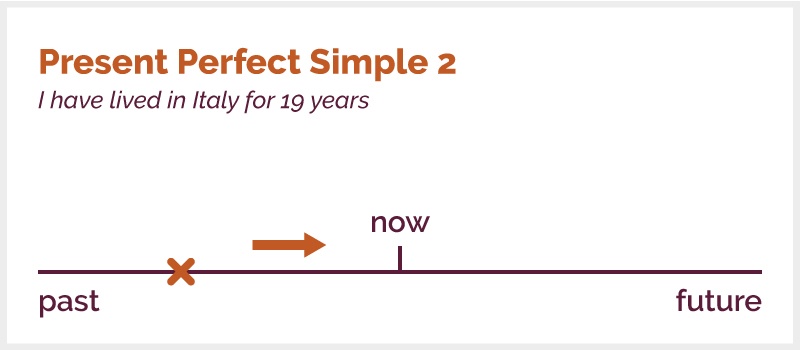VOCABULARY - DRINKS AND DRINKING
The video and articles in this edition of Speak for Yourself introduce you to a lot of common language and phrases on the topic of drinking. Download this Speak resource with the key terms and phrases from the videos and articles here:
GRAMMAR - PRESENT PERFECT SIMPLE
In the article, "Starbucks Opens First Coffee Shop In Italy" we can see many examples of the Present Perfect Simple Tense in action.
EXAMPLES OF PRESENT PERFECT (ACTIVE):
1. "Starbucks has opened its first branch in Italy, despite long resistance from Italians"
2. "Italians have always resisted the global coffee behemoth, claiming its coffee is overpriced and poor quality"
3. “We have taken our time to ensure our entry into Italy is done thoughtfully and respectfully”
EXAMPLES OF PRESENT PERFECT (PASSIVE):
4. "The Milan Roastery has been created to reflect the rich fashion and design culture of the city, featuring a roastery, bar, bakery and wood-fired oven"

The Present Perfect Simple tense is one of the most particular and, for English learners, difficult tenses in the English language. This is mainly because it doesn’t necessarily have an easy translation in other languages.
Part of the problem is that it seems similar to tenses in other languages because of its basic construction using have (as an auxiliary verb) + past participle of a verb. It therefore seems similar to the Italian Passato Prossimo. However, the meaning can often be very different.
The important thing to remember is that the Present Perfect in English always has some type of connection with the present (as we say in English, “the clue is in the name!”). So, while Passato Prossimo logically refers to the past, the Present Perfect gives information about a present situation – often based on what has happened “up to now” or that produces a result of some kind in the present.
It is helpful when trying to understand the Present Perfect to divide its use into two basic areas which we can define like this:
Present Perfect 1 - used for "concrete results"
Present Perfect 2 - used to describe "time up to now"
Let’s briefly have a look at each case:
Present Perfect 1 - used for "concrete results":
“Starbucks has opened its first branch in Italy, despite long resistance from Italians"
This is the simpler type of Present Perfect and describes how something we did or something that has happened may have an effect on the present. It is often presented to people as “news”. Here is a very simple example:
"I have lost my key"
This phrase basically tells us 2 pieces of information in 1 phrase. Firstly, it tells us that “before now” something happened: I lost my key.
BUT: it also tells us something more. It tells us about the present situation – I don’t have my key now. The result? I can’t open the door!

This is different from the Past Simple in English which, in this example, would look like this:
"I lost my key" (no auxiliary have)
This phrase only tells us about the past – the fact that you lost your key. It doesn’t tell us the present situation – we’re not interested. In this case we are only interested in the past event. In fact, if we want to explain the present situation too, we need to use the Present Perfect!
In the articles and audio in Speak for Yourself #7, an example of the Present Perfect with a concrete result is:
“Starbucks has opened its first branch in Italy, despite long resistance from Italians"
The event itself (the "opening") is past (or before now) but the result is present: it’s news. Have you heard? There is a new Starbucks in Milan!

Now let’s look at the second type of Present Perfect:
Present Perfect 2 - used to describe "time up to now"
“Italians have always resisted the global coffee behemoth”
This type of Present Perfect is difficult because this type of expression doesn’t actually exist in the same way in many other languages.
The logic of this use in English is making a relationship between the beginning of a situation and now.
It is often used to say how long or how many times something has happened, from the perspective of a particular starting point, until now.
Note that we often use “for “ and “since” when we describe this period of time.
A classic example of this kind of use is this:
"I have lived in Italy for 19 years"

This phrase would be translated in Italian in a present form with a time reference such as “da”, and so "Vivo in Italia da 19 anni".
However, we can’t say in English “I live in Italy for 19 years”. We say “I have lived in Italy for 19 years”.
This causes a lot of confusion for Italian students of English because it seems natural to consider “Have + Past Participle” as something past (because of Passato Prossimo). However, when we say “I have lived in Italy for 19 years” in English, we mean that it started 19 years ago but it continues today! It is still relevant in the present. This is the connection in time with the present and why Present Perfect describes both the beginning of an event and the present situation in one phrase. Great isn’t it? Again, to use the example from the Starbucks article:
“Italians have always resisted the global coffee behemoth”
This means that from the past until now, Italians have resisted Starbucks. This therefore describes a period which continues up to now (or, in this case, until very recently).
There will be a Speak blog coming very soon regarding the use of Present Perfect but, in the meantime, have a listen to this classic song I Still Haven’t Found What I’m Looking For by U2 to hear a great example of the Present Perfect used in action!










